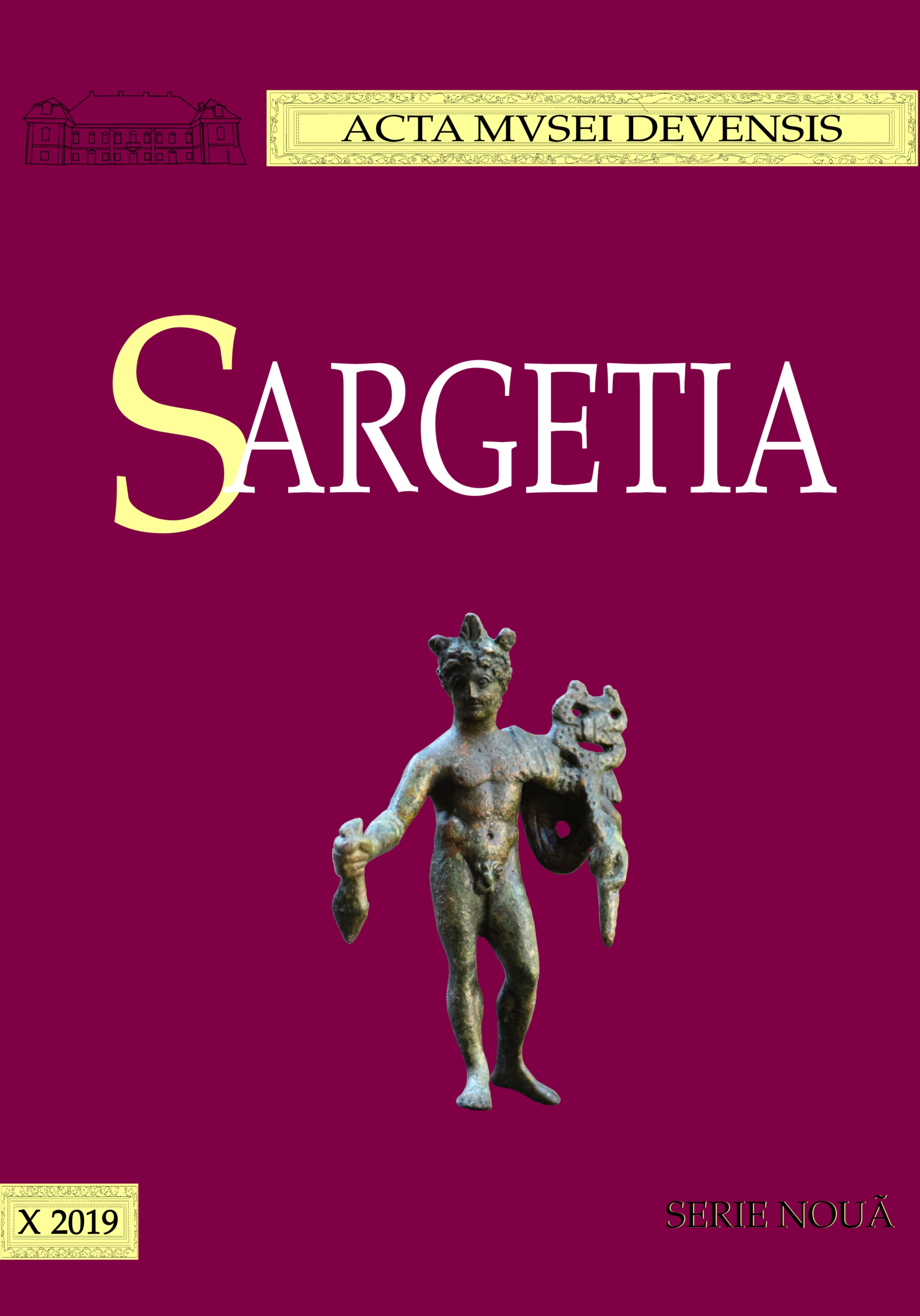Situri și descoperiri de epocă romană din
împrejurimile Potaissei (II). Date noi și
clarificări privind siturile de la Vâlcele
Archaeological Sites and Roman Age Discoveries Around Potaissa (II). New Data and Explanations About the Sites from Vâlcele
Author(s): Andrei-Cătălin Dîscă, Ștefan Vasilache, Dinu BereteuSubject(s): History, Archaeology
Published by: Editura Altip
Keywords: Roman Dacia; Potaissa; Vâlcele; rural settlements; archaeological mapping;
Summary/Abstract: Around 169 AD the Legio V Macedonica was transferred in Dacia Porolissensis, to the north of Arieș River, close to the civilian settlement from Potaissa. From that moment on Potaissa grew rapidly, becoming at the end of the second century one of the biggest urban centres of Dacia. Under these circumstances it is easy to explain why, on the one side, the legionary camp and the town of Potaissa were intensely studied by the scholars over the last decades, while, on the other side, the smaller settlements nearby Potaissa were investigated to a much smaller degree. Although the scholars interest for the military camp and town from Potaissa was entirely justified by the importance of these two sites for the history of the whole province, still it is a fact that in the current state of research there are lacking essential data about the other Roman sites from the region, as for example their exact locations, dimensions and archaeological inventories. In our opinion the current state of research must be immediately improved and for doing this it is necessary, first to sum up the information from the literature, second to field walk systematically this area, and third, to map and inventorise the sites identified using GPS devices and GIS software. Over the last years we carried out this type of investigations in many areas from around Potaissa, one of the areas investigated being the territory of Vâlcele village. In this territory, located some 19 km to the northwest of Potaissa (Pl. II/2/I), there is mentioned in the literature a Roman age settlement in the point Săliște (Pl. I/2/II). This settlement was partially investigated through a rescue excavation at the end of seventies of the twentieth century, on that occasion being identified two medieval stone strucures, several Roman bricks with the stamp of Legio V Macedonica, and an ancient stone altar. In addition to the site from the northwest of the village, during our fieldwalkings was identified a new site to the south of village, in the point known as Morărașu (Pl. I/2/I). In this point were noticed numerous construction debris and Roman pottery fragments (Pl. III/4, IV-X) scattered over an area measuring around 2.20 ha. As it is going to be argued in this study on the site to the south of Vâlcele developed, most likely, a small rural settlement, either of the type of a nucleated settlement, or of a farm. The same cannot be argued for the site to the northwest of the village. On the contrary, our investigations revealed that although the existence of a Roman settlement in the point Săliște is most often taken as a certainty in the literature, still this hypothesis is really doubtful. It seems rather that all the Roman artefacts found on this site were brought here from somewhere else. This hypothesis is supported by the following evidences: 1) the earliest writings about this site, those of Balázs Orbán and István Téglás are saying nothing about the Roman period; 2) during the rescue excavations carried out by Ioan Mitrofan at the end of seventies of the twentieth century were identified only medieval structures, alongside with several stamped Roman bricks, roof tiles and a stone altar, but there is no mention of pottery or other Roman artefacts except for those appropriate to be used as building materials; 3) finally, during the field walks carried out in this point in 2018 were identified only construction debris as well as medieval and modern pot-shards (Pl. III/3) but not even one fragment of Roman pottery.
Journal: Sargetia. Acta Musei Devensis
- Issue Year: 2019
- Issue No: 10
- Page Range: 103-129
- Page Count: 27
- Language: Romanian

